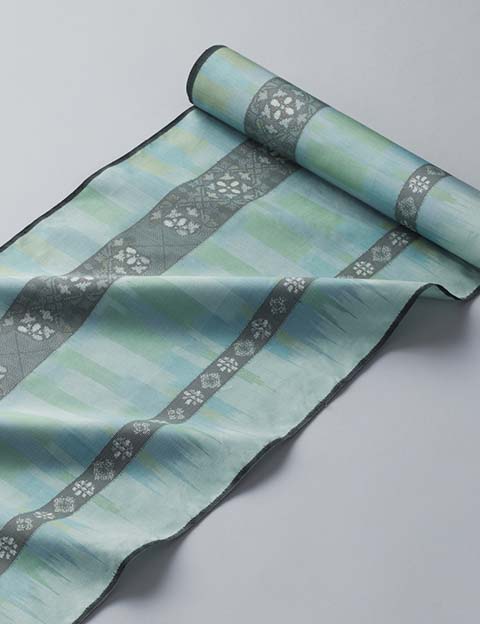MURAYAMA OSHIMA Tsumugi (Pongee)

While the history of this kimono cloth only dates back to the middle of the 19th century, in 1920 the techniques associated with two different cloths were combined to produce the silk cloth known as Murayama Oshima Tsumugi.
One of them was an indigo dyed, figured ikat called Murayama Kongasuri, and the other was a silk cloth called Sagawa Futoori woven from a dupion thread. Its sheer quality and durability have always given Murayama Oshima Tsumugi a large following, and it has been recognized by the Tokyo Metropolitan Government as an intangible cultural property.
Kimono made of this light, comfortable cloth is often handed down from mother to daughter, and on to her granddaughter. The unparalleled tradition and quality of this cloth are still recognized today.
Feature
Murayama Oshima Tsumugi fabrics, light and pleasant to the touch, have been passed down from grandmother to mother, and then mother to daughter through the years. They possess a unique fashionable sense that combines the profound charm of a traditional craft with a style that turns heads even today.
How to make
First, the ikat frame is prepared according to the design before individual threads are mounted on the frame and tightly bolted to maintain tension. The threads are dyed using the ikat resistance dyeing technique. The ikat dyed threads are then gathered into bundles and dyed again using a single bamboo board carved and covered in dye paste according to the design. The ikat dyed threads are combined with undyed warp threads using a mazaki-dai frame and wound onto the spindle of a makiosa loom before being woven according to the ikat pattern.

